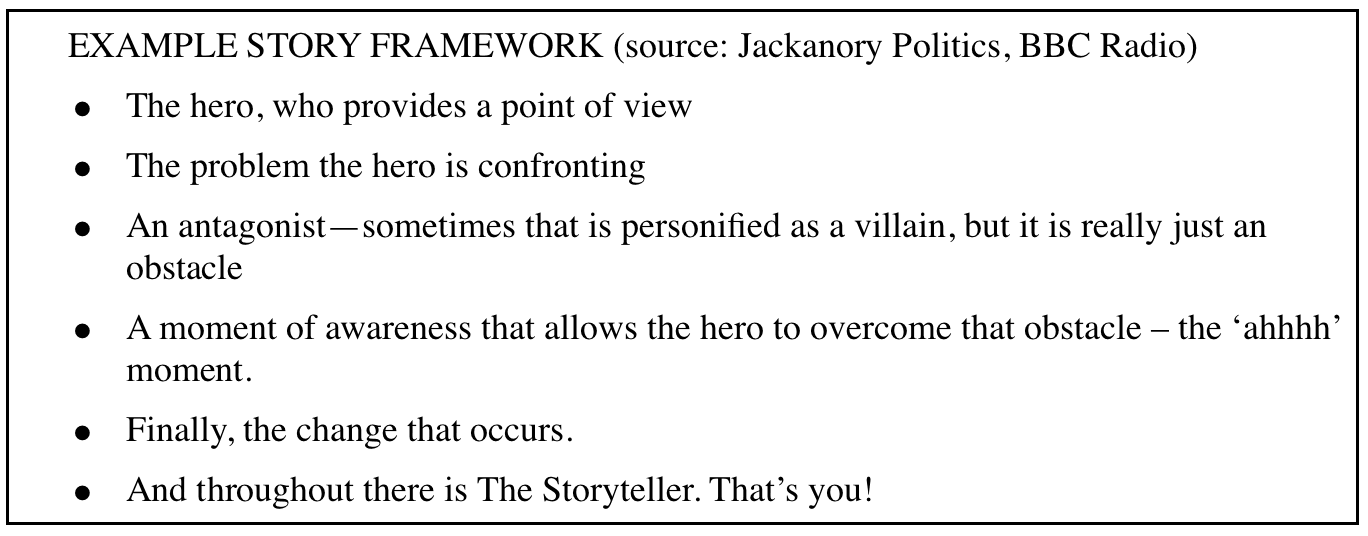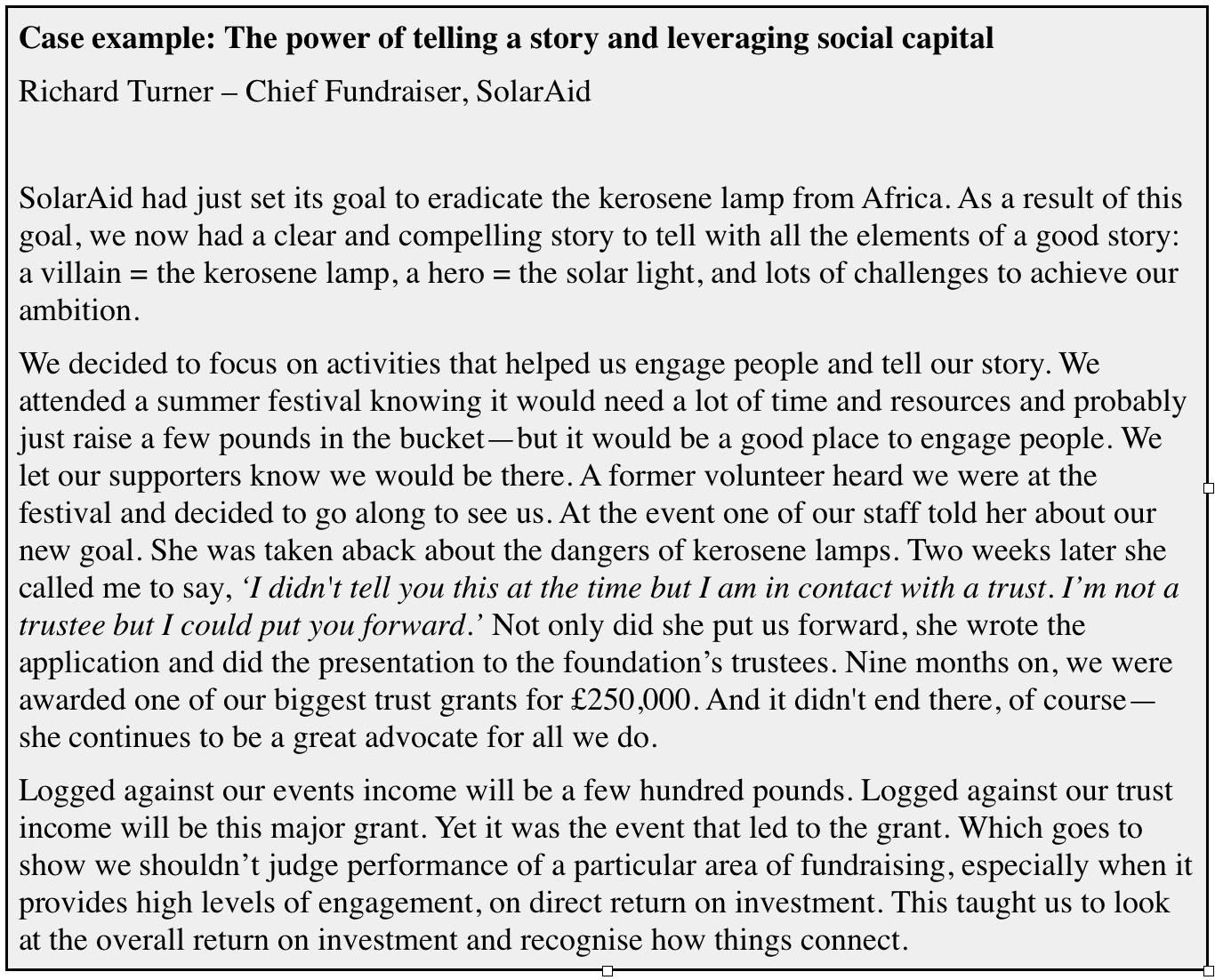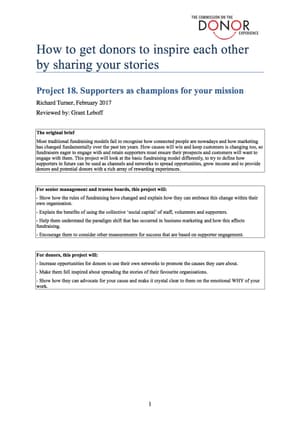CDE project 18 section 3.3: action 4 — tell your mission story
- Written by
- The Commission on the Donor Experience
- Added
- April 20, 2017
All fundraisers are aware they need to tell stories well so they can convey quickly in a way that engages people. Now it is even more important to spend time to understand how to tell powerful stories. There are plenty of story frameworks, such as the one below, that you can use to help refine your story and make it as powerful as possible.

The stories you tell should relate to your purpose or mission, i.e. WHY you exist. That way, if an individual, who is inspired when first hearing it, is compelled to tell others, who in turn decide to support you or continue to spread the story, it all joins up. When someone contacts you, the story they hear back is part of the same mission story they were first told, by someone they know, that prompted them to get in touch.
This should naturally follow if you have identified your focus or the purpose of your organisation.
This is David Meerman Scott’s take on how your story needs to authentic:
Authentic storytelling sets the tone [12]
- People want authenticity, not spin.
- People want participation, not propaganda.
- Your organisational story cannot be dreamed up by an ad agency.
- The individual at the top of the company is the master storyteller, the conductor of the organizational orchestra.
- With social networks, every employee has a role in sales and customer service and must sing from the same hymnal.
- Buyers want information in language they understand, not gobbledygook-laden jargon.
Recommended further reading:
Storytelling Can Change the World by Ken Burnett
Made to Stick by Dan and Chip Heath
Armed with your story, you need to find places where you can engage the right audience to tell it. This may mean doing activities that you would not choose to do if you were applying a direct ROI but are excellent opportunities to engage people who share your beliefs. These following case examples illustrate the benefit from doing so.


Question to ask: What activities will provide a high level of engagement, where you can engage the right audience and inspire them about your story—even if they provide a low immediate ROI?
------------------
[12] The New Rules of Sales and Service, p. 39, Chapter 2.























